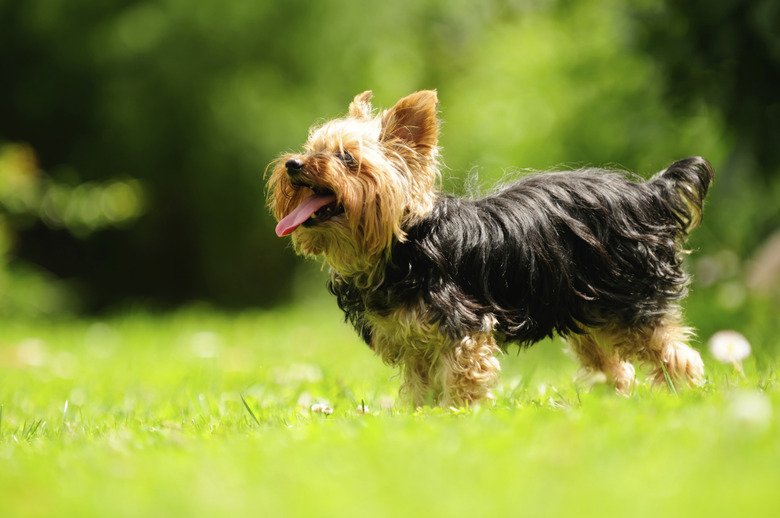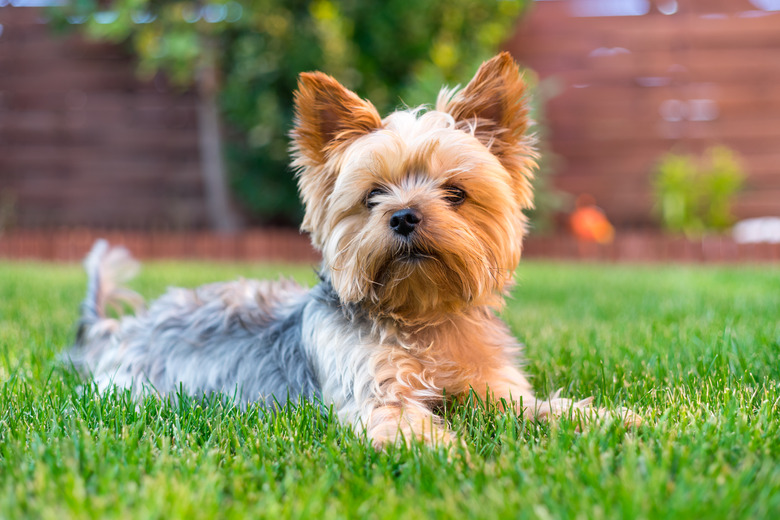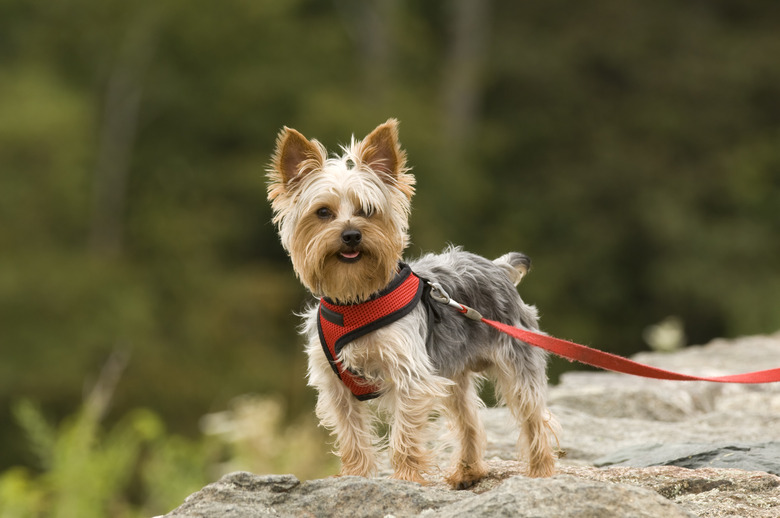Yorkie Colors: When Do Yorkies Change Colors?
Yorkshire terriers aren't born with their classic blue and tan coats. These toy breeds are born with Yorkie black and gold coats and, during the first year of life, they mature into their adult coats. The American Kennel Club breed standards require adult dogs to have a dark steel-blue coat from the dog's neck to tail and do not allow for the silver-blue color or for mixing of black or lighter colored hairs.
Yorkie puppy coat stages
Yorkie puppy coat stages
Yorkshire terrier puppies are born with much darker coats than they'll possess at maturity. In some puppies, much of the coat looks completely black. As puppies, the black and tan hairs of his coat will blend and intermingle. The Yorkie color change to his adult coat happens gradually and begins when he is nine to 10 weeks old when you may see the first signs of silver hair appearing on his head. This means that unless you breed Yorkies, the colors will already have started to change by the time you bring the pups home at 12 weeks.
Between weeks 16 to 20, Yorkies lose the fuzzy puppy fur, which is called felting. Within two weeks, the Yorkie's fine sleek hair begins to grow back. Don't be concerned if your Yorkie appears not to have much hair during this transition. The color change also progresses during this period and by week 16, the silver color progresses to your Yorkie's back.
By the time your Yorkie reaches six months of age, his adult silver and tan coloring will be clear. However, the complete transition is not complete until the Yorkie reaches age two.
Coat color and care considerations
Coat color and care considerations
After the Yorkie color change, they should be a dark, steel-blue from the back of the dog's neck to the tail. There should be no silvery-blue color and no black, bronze, or fawn hairs on the body. The head, chest, and legs should be tan in color with no black hairs mixed in. The sides of the head, base of the ears, and muzzle will be a deeper color. A small white marking on the chest is allowed; however, any other white on the Yorkie means that the dog does not meet the standards of the breed. The standard does not allow for solid-colored dogs.
When your dog starts losing his felting, it is important to start brushing him regularly. During the transition from puppy to adult hair, it is easy for the hair to get tangled and matted. Between 16 and 20 weeks of age, Yorkies are ready to be taken to a groomer and have a small amount of hair trimmed. They need to be groomed every six to eight weeks from this time.
In between grooming, be sure to brush the Yorkie's coat daily, especially if you keep his hair long. He will need a weekly bath. Many Yorkie owners will clip or tie the hair on top of the dog's head back with a ribbon or bow. This keeps the hair out of the dog's eyes and prevents irritation. Although they require a lot of grooming, Yorkies infrequently shed.
Other Yorkie care
Other Yorkie care
Yorkies are a toy breed and only measure 7 to 8 inches tall and weigh no more than 7 pounds. Don't leave puppies unattended outdoors. Not only are they small enough to squeeze through any holes or breaks in the fencing that you may be unaware of, but they are also attractive to predators such as hawks and coyotes. Additionally, Yorkies are sensitive to extremes in temperature and are more likely to be affected by cold or hot weather than other dogs.
Like many terriers, Yorkies are tenacious and brave. These feisty dogs won't hesitate to go after a larger dog or predator, so be sure to train your Yorkie to walk on a leash and learn other obedience commands to keep him safe in social settings. Despite their friendly nature, Yorkies have a stubborn streak, so be prepared to use plenty of patience and positive reinforcement.


